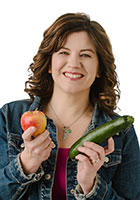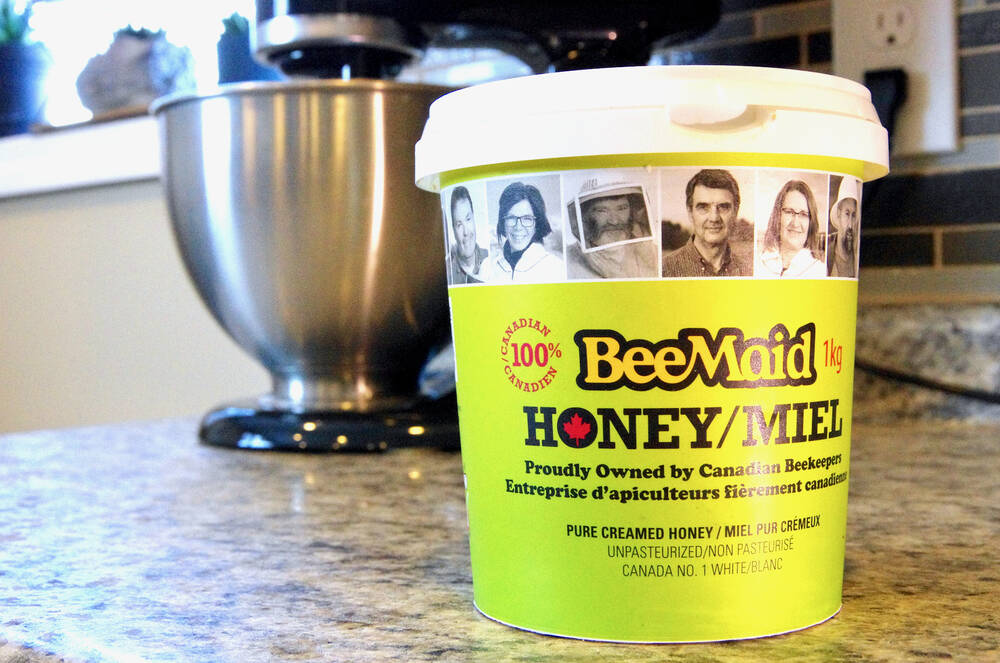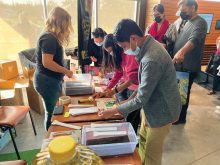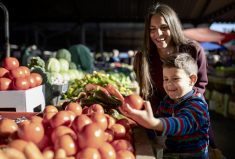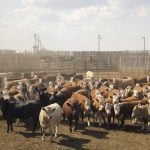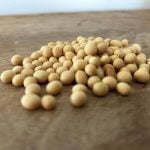If you’re one of the grocery shoppers opting for more Canadian products, you’re not alone. Escalating trade tensions, increasing food prices and concerns about food security are prompting Canadian shoppers to choose Canadian-made and Canadian-grown goods more often.
Finding Canadian products isn’t always easy—imported goods often dominate store shelves. To help consumers make informed choices, two optional labels are sometimes used: “Product of Canada” and “Made in Canada.”
- Product of Canada: This label means that at least 98 per cent of the product’s ingredients are sourced from Canada. It is the gold standard for identifying truly homegrown goods.
- Made in Canada: This label indicates that the product was manufactured or processed in Canada, even if the ingredients themselves may be imported. At least 51 per cent of the total manufacturing costs must be incurred in Canada.
For foods produced outside of Canada and imported, you’ll see phrases like “Imported for/Imported by,” “Product of” or simply the foreign manufacturer’s name and address.
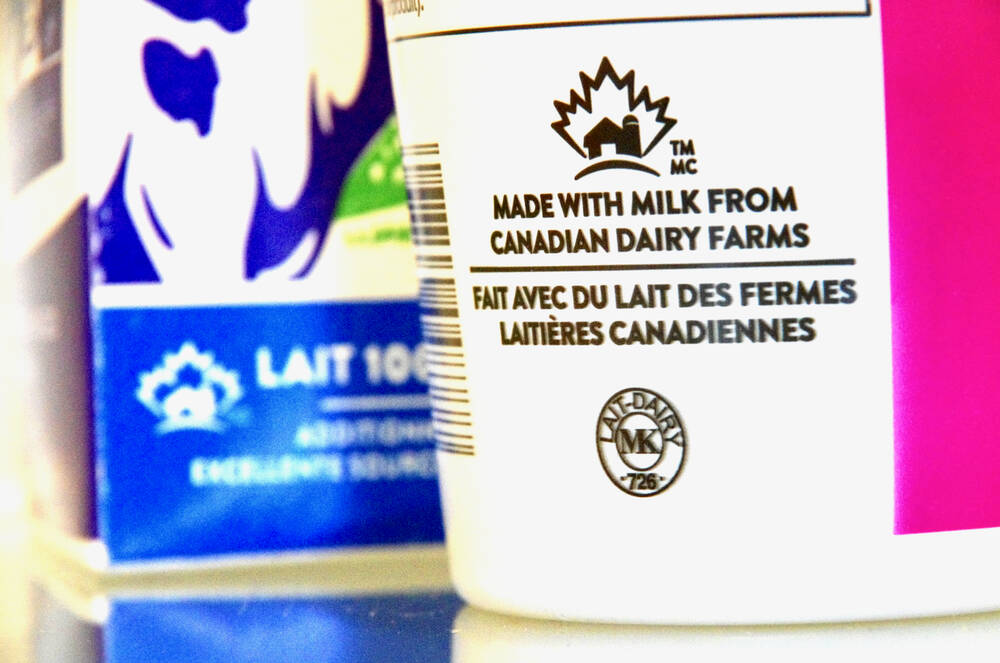
Finding the local stuff
Since the Canadian labels are optional, not every Canadian product will carry them. If a product doesn’t carry either of these, here are some other ways to tell if a product is Canadian. Look for the farm or producer name. Many small-scale producers proudly display their farm or processing facility location on the label.
Read Also
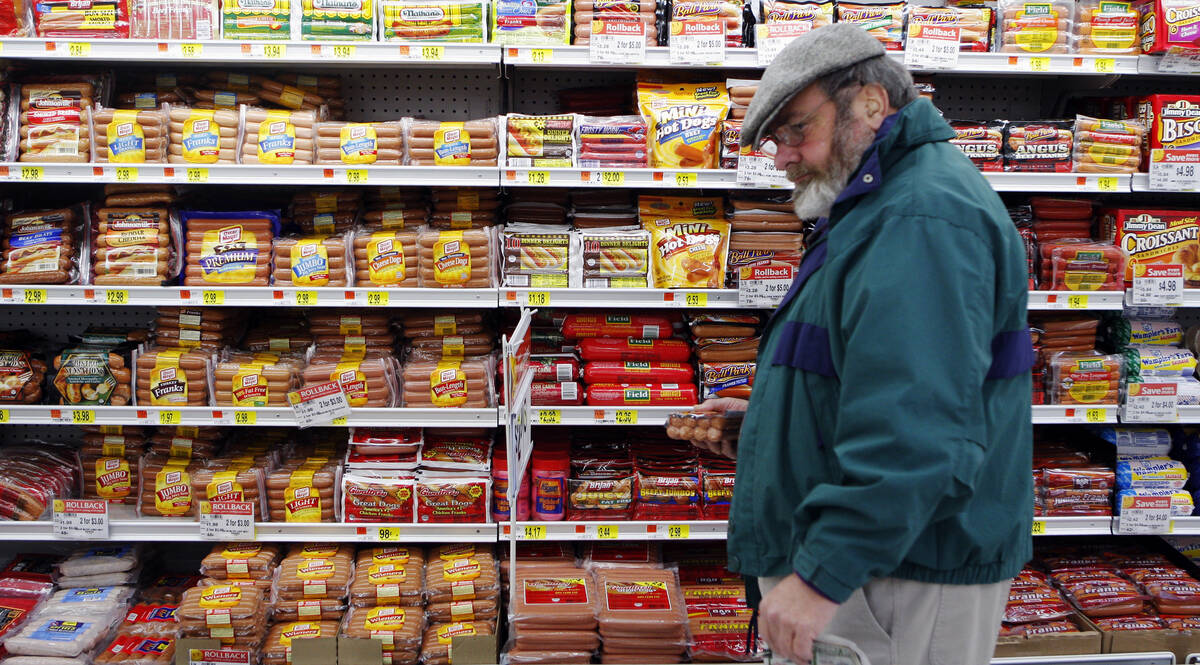
Canada seventh on agri-food influence
Comparison of 19 G20 countries says Canadian agri-food needs investments, processing, action on retail consolidation to realize potential
Check for provincial logos: On Feb. 5, the Manitoba government launched a new advertising campaign, “Support Manitoba. Buy Local.” Expect to see more local foods labelled with “Buy Manitoba,” “Made in Alberta” or “SaskMade.”
Look for producer group labels: Many producer groups also have labels to indicate products are sourced from Canadian farms. For example, look for “Dairy Farmers of Canada,” “Verified Canadian Pork,” “Peak of the Market,” “Canadian Beef,” “Raised by a Canadian Farmer” for chicken and “Canada Grade A” inside the image of a maple leaf for Canadian eggs.
Buy directly from farmers or visit farmers’ markets: Buying directly from farmers ensures your purchases support local producers. Visit Direct Farm Manitoba’s website for a listing of farmers’ markets and direct marketing farms.
Ask questions: Don’t hesitate to ask your grocer which products come from local sources and encourage them to stock local products.
Local food versus trade
Will your purchases impact rising food prices or global trade? Likely not. But every local purchase helps strengthen rural communities and builds a more resilient local food economy. According to BC Buy Local, for every $100 spent at a local supplier, $63 stays in the local economy, compared to just $14 when shopping with multinational corporations.
By supporting local farmers, food artisans and small producers, we help ensure these industries thrive for future generations. While we live in a global economy and will continue to buy and enjoy foods from around the world, this “buy-Canadian” movement reminds us that our purchasing choices matter.
As for what to make with locally sourced ingredients, try some of these recipes this month.
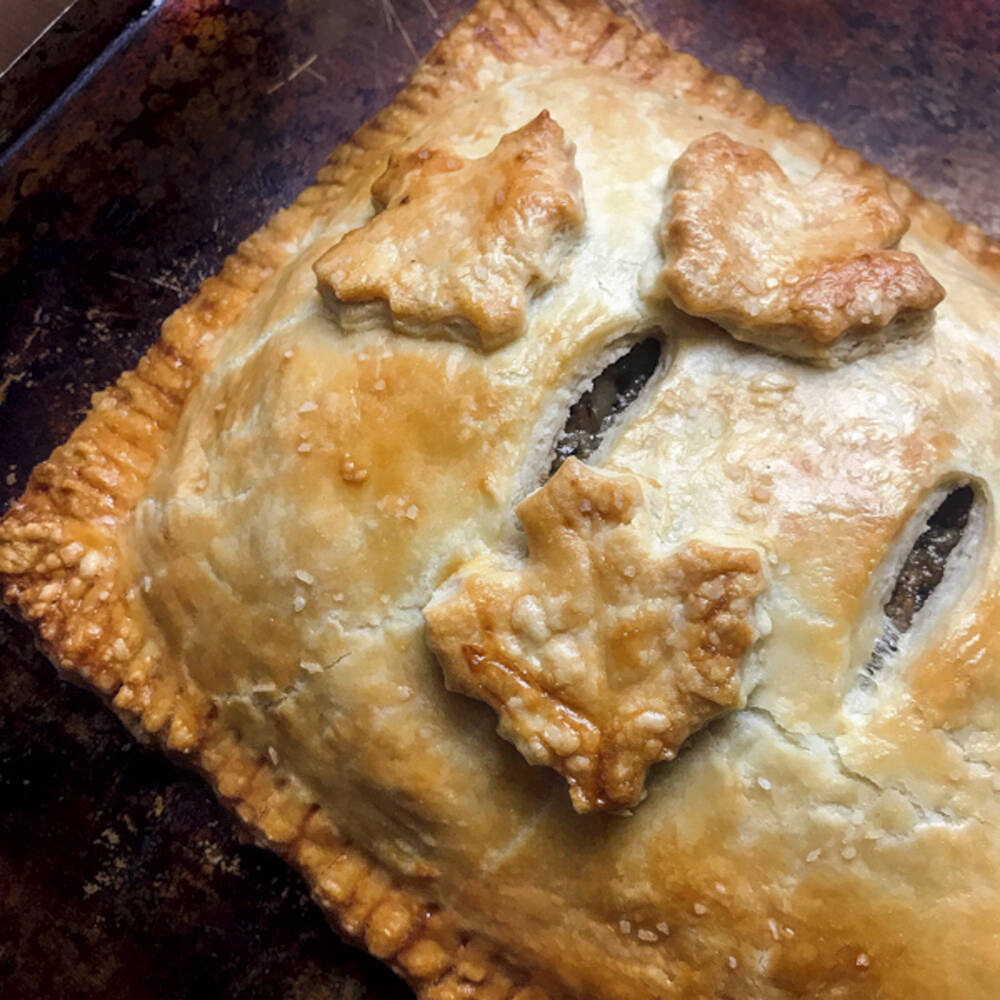
Tourtière with Puff Pastry
Celebrate Canadian history and Canadian products with this delicious meat pie. Makes: Eight to 10 servings
Ingredients
- 1 tbsp canola oil
- 1 lb ground beef
- 1/2 lb ground pork
- 1/2 lb ground chicken
- 1 onion, chopped
- 1 cup mushrooms, finely chopped
- 3 cloves garlic, chopped
- 1/2 tsp cinnamon
- 1/4 tsp nutmeg
- 1/8 tsp cloves
- 1/2 tsp sage or thyme
- 1/2 tsp salt
- 1/4 tsp black pepper
- 1/2 cup red wine
- 1 cup beef stock
- 1/2 tbsp Worcestershire sauce
- 2 medium Russet potato, shredded
- 1 lb (454 g) frozen puff pastry
- 1 egg
- 1 tbsp water
Directions
Meat filling:
- Heat large skillet over medium-high heat. Add oil. Add ground beef, pork and chicken and brown, seven to 10 minutes. Remove from pan and set aside.
- Add onions, mushrooms and garlic to pan and cook until transparent and soft, three to five minutes.
- Add spices and let cook til fragrant, one minute. Deglaze pan with wine. Stir in beef stock and Worcestershire sauce.
- Add shredded potatoes and cook until potatoes are soft and mixture thickens, 10-12 minutes. The filling should be sticky with no remaining liquid.
- Taste and adjust seasoning. Remove from heat and cool. Can be prepared a day ahead.
Assembly
- Preheat oven to 400°F and line baking sheet with parchment paper.
- Place cut parchment on counter and roll out one thawed puff pastry layer to form a 10-inch by x 11-inch rectangle. Transfer parchment with pastry to sheet pan.
- Add cold meat filling to top of puff pastry, leaving a one-inch border around the outer edge. Press to pile meat filling in space. Lightly wet outer edge of pastry all around with water.
- On a floured surface, roll out second piece of puff pastry to be slightly bigger than first piece. Gently roll onto a floured rolling pin and transfer to position on top of meat. Pinch together pastry edges and flute for decorative effect, if desired. Score one-inch diagonal lines across top of pastry, making a couple of slits to allow steam to escape. In small dish, gently mix egg with water. Use soft bristle brush to apply a thin, even layer of egg wash over top of puff pastry.
- Place in oven and bake for 35-45 minutes, until golden brown on top.
Source: www.gettystewart.com
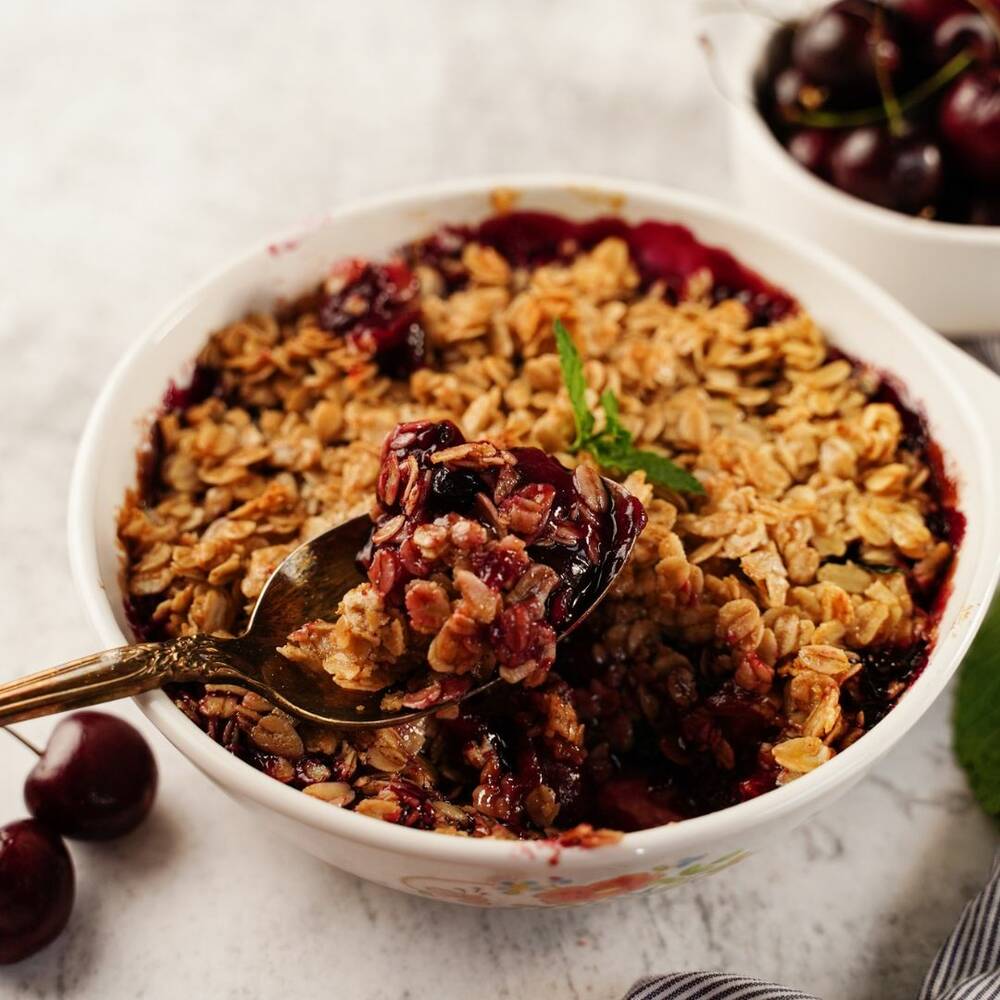
Prairie berry crisp with honey and oats
Frozen Prairie fruit is perfect for this delicious dessert. Makes: Four to six servings
Ingredients
Filling
- 5 cups frozen (not thawed) Prairie berries such as raspberries, saskatoons, strawberries
- 1 tsp vanilla extract
- ½ cup honey
- 2 tbsp cornstarch
- ½ tsp cinnamon
Topping
- 1 cup rolled oats
- 2/3 cup flour
- 1/3 cup brown sugar
- 1 tsp cinnamon
- 1/2 cup cold butter, cubed
Directions
- Preheat oven to 375°F.
- In bowl, mix berries, vanilla, honey, cornstarch and cinnamon. Transfer to eight-inch (20 centimetres by 20 centimetres) baking dish.
- In medium bowl, mix dry topping ingredients.
- Use a pastry blender or fingers cut butter into the dry topping ingredients until well distributed and crumbly.
- Sprinkle over fruit and bake for 40-45 minutes. The filling should be bubbling and the top should start to turn golden brown.
- Let cool for at least 30 minutes before serving.
Source: www.gettystewart.com
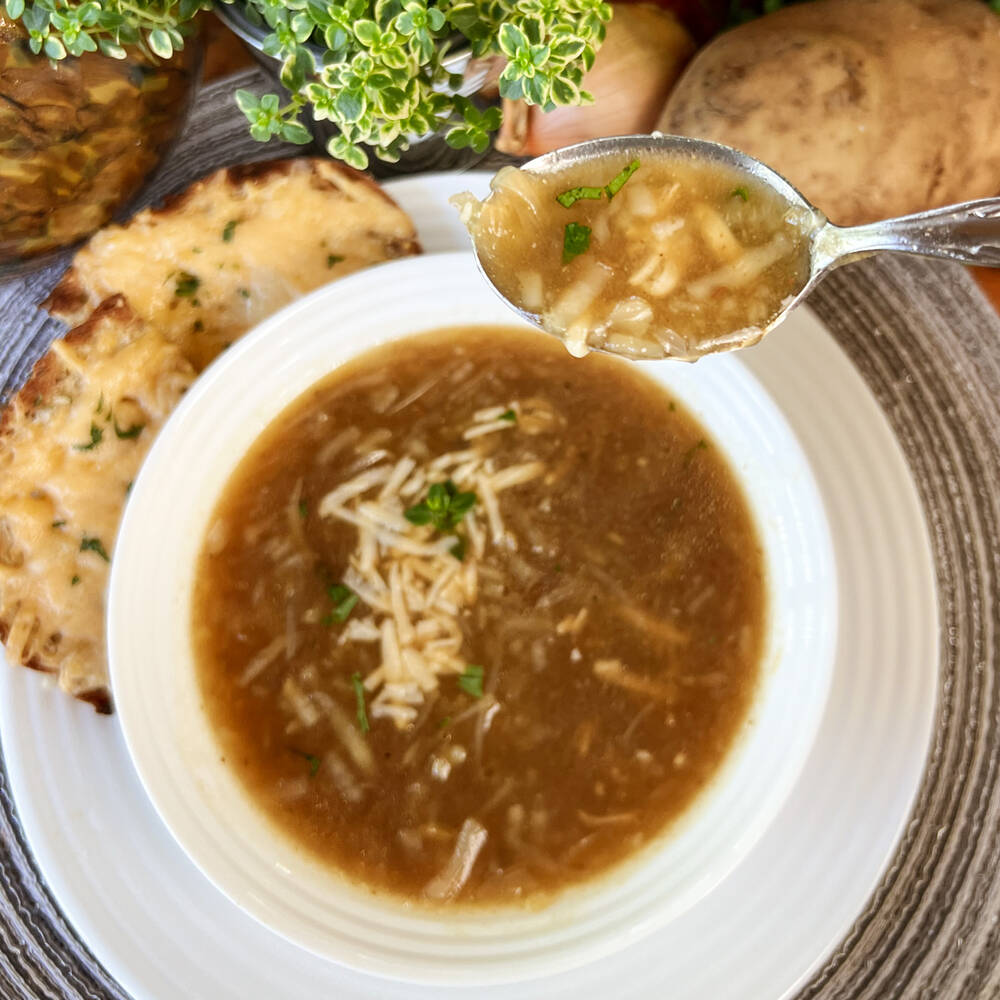
Italian inspired potato onion soup
A simpler version than its French cousin, you’ll love this delicious soup using local potatoes and onions.
- 3 medium Russet or Yukon gold potatoes
- 1 tbsp canola oil
- 2 large onions, thinly sliced
- 2 cloves garlic, minced
- 3 sprigs fresh thyme (or 1 tsp dried)
- 5 cups vegetable broth
- 1 bay leaf
- Salt and pepper to taste
- Parmesan cheese and parsley for garnish
Directions
- Wash potatoes and remove any blemishes, do not peel.
- Use the large-holed side of a grater to shred potatoes. Keep shredded potatoes covered in water to prevent browning. Set aside.
- Heat oil in large pot over medium heat and cook onion until soft, not browned, about five minutes.
- Stir in garlic and thyme and cook for a minute until fragrant.
- Drain shredded potatoes and add to pot. Pour in broth and add bay leaf. Simmer for 25 minutes or until potatoes are tender.
- Remove bay leaf and season with salt and pepper.
- Serve, topped with Parmesan cheese and fresh chopped parsley.
Source: www.gettystewart.com

